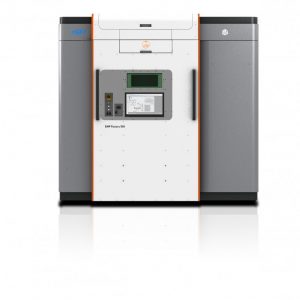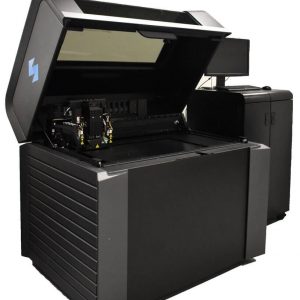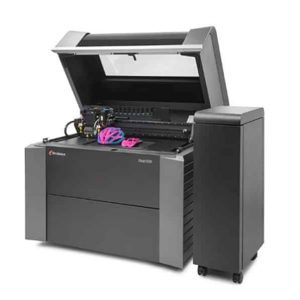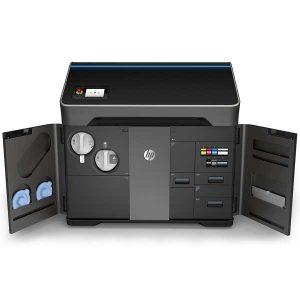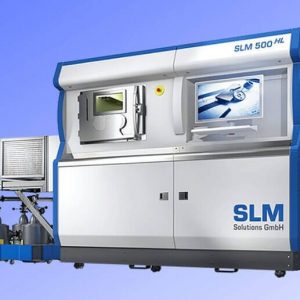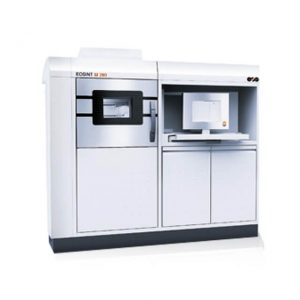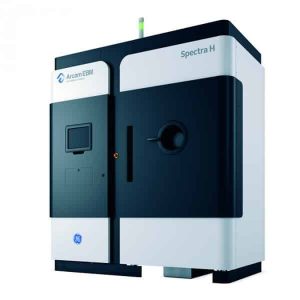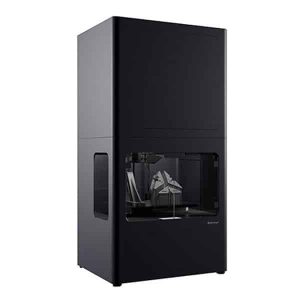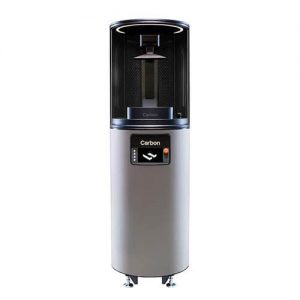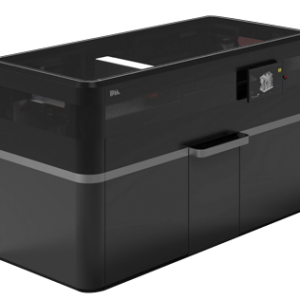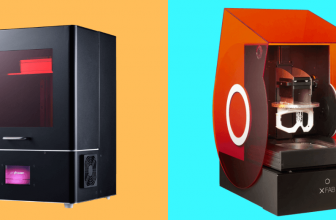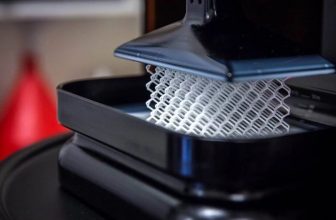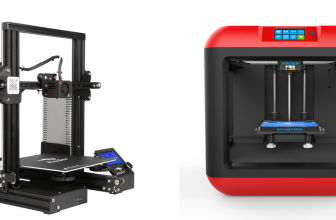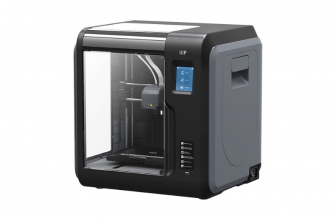The world of 3D printing has come a long way since its inception, and the giants of the industry are taking it to the next level – quite literally!
The concept of 3D printing has been massively scaled to create objects that were unimaginable in the yesteryears.
Using the same concept of physically creating an object layer by layer from its computer blueprint, big gigantic machines can create even bigger objects and structures at blazing fast speed.
In most instances, these giant 3D printers create the same structures at a fraction of the cost incurred using traditional methods.
Recently, a Chinese construction company built 10 houses in a single day using giant 3D printing technology. Imagine the time it would have taken to build the same brick and mortar using traditional machinery!
3D printers are effective and efficient. They allow designers and engineers to cost-effectively produce their larger prototypes using 3D printers without breaking them down into several pieces.
That’s why, manufacturers like HP, 3D Systems, Stratasys, and many others are investing their time, resources and, energy to come up with applications that can 3D print almost everything.
Based on our research and findings, we listed the 15 most innovative giant industrial 3D printers in the market. They serve several users’ needs, are valuable for explicit applications, and use different technologies.
Top Giant 3D Printers 2025
| Name | Technology | Build Volume | Materials | Price | Rating | Links |
|---|---|---|---|---|---|---|
| 3D Systems DMP Factory 500 | Direct Metal Laser Sintering (DMLS) | 500 x 500 x 500 mm | Metals | $250,000 | 8.5 | |
| Stratasys J750/735 | Poly Jet | 350 x 350 x 200 mm (J735) 490 x 390 x 200 mm (J750) | Plastic Photopolymers | >$250,000 | 7.4 | |
| Stratasys Objet500 Connex3 | Jetting | 490 x 390 x 200 mm | Plastic Photopolymers | $330,000 | 6.8 | |
| HP Jet Fusion 300/500 | Multi Jet Fusion | 332 x 190 x 248 mm (500) 254 x 190 x 248 mm (300) | Plastic Photopolymers | $50,000+ | 8.5 | |
| SLM 500 HL | Selective Laser Melting | 500 x 280 x 365 mm | Metals | $1-2 million | 7.6 | |
| EOSINT M 280 | Direct Metal Laser Sintering (DMLS) | 250 x 250 x 325 mm | Metals | >$250,000 | 8.5 | |
| Arcam Spectra H | Electron Beam Melting | 250 x 430 mm | Metals | $100,000- 250,000 | 7.5 | |
| Concept Laser XLine 2000R | Selective Laser Melting | 800 x 400 x 500 mm | Metals | >$250,000 | 8 | |
| Markforged Metal X | Atomic Diffusion Additive Manufacturing | 200 x 200 x 250 mm | Metal Powder, Thermoplastics | $99,500 | 7.7 | |
| Carbon M2 | Continuous Liquid Interface Production (CLIP) | 189 x 118 x 326 mm | Plastic Photopolymers | $500,000-1 million | 7.2 | |
| Desktop Metal Production System | Single Pass Jetting | 330 x 330 x 330 mm | Metals | $420,000 | 8.6 | |
| 3D Systems Figure 4 | Digital Light Printing (DLP) | 124.8 x 70.2 x 196 mm + (Scalable) | Plastic Photopolymers | $21,900 | 7.4 | |
| Envision TEC Perfactory 4 LED XXL | LED DLP | 230 x 144 x 200 mm | Plastic Photopolymers | $110,000 | 8 | |
| Prodways ProMaker V6000 | Moving Light | 120 x 157/350/500 x150 mm | Ceramic Resin | $500,000 | 9 |
Overview of the Best 15 Giant 3D Printers of 2025
3D Systems DMP Factory 500
|
3D System is known for its printers’ scalability. It manufactures DMP Factory 500 with a large building volume size of 500 x 500 x 500mm.
It provides massive scalability along with high throughput and low Total Cost of Ownership. The printer can print 24×7. It works using powder bed fusion technology.
It is equipped with a vacuum chamber that allows less than 25-ppm oxygen inside. It is best suited to produce small and complicated metal parts.
You can control the quality, workflow, and cost of your parts. It provides consistency in batch production and power control.
The system comprises four units.
- Transporter: It transports part from one location to another
- Storage box: It stores powdered metals safely
- Preheater: Material is preheated here before 3D printing
- 3D printer
This printer is used in the manufacturing of aerospace, dental, medical, automotive, jewelry parts, and functional prototypes.
- A scalable industrial 3D printer
- Uniform and repeatable quality
- Lower part cost
- Can print large parts
- High production volume
- Costly
- Need a warehouse or a separate room
Stratasys J750/735
|
Stratasys J735 and J750 are the top two prototyping industrial 3D printers. They both 3D print color and multi-texture objects using multi-materials that are similar in look, touch, and functionality as the production parts.
J750 is older than J735. Both printers use the PolyJet printing process to lace complicated color geometrical objects.
They aim to deliver ‘real’ parts. Car manufactures like Audi is using this technology to imitate parts for design approval.
- Cutting-edge realism
- High repeatability
- Cost reduction
- If there were more photographs on the website of the parts and functional prototypes printed by the printer, that two, it would have easier to guess the print quality.
Stratasys Objet500 Connex3
|
In 2014, Stratasys launched the Objet500 Connex3. It combines multiple rigid, flexible, and transparent materials to produce infinite material combinations of objects by using triple jetting technology.
It is useful for manufacturers who want to create functional designs.
It is one of the premier industrial 3D printers due to its multi-color capability and vast material property.
It is also compatible with materials that have mechanical properties; tensile strength, hardness, and toughness.
Due to the new GrabCAD compatibility, the design-to-print workflow has improved.
HP Jet Fusion 300/500
|
After an immense amount of research, HP launched its Multi Jet Fusion 3D printer in 2016. It created a lot of hype in the additive manufacturing market.
It is able to fabricate parts with a voxel control and perform color 3D printing efficiently. You can also use it for medium-sized manufacturing.
It consists of four machines; the 580 and 380 do full-color printing of objects while 540 and 340 print in black and white.
The 500 series have a build volume of 332 x 190 x 248mm whereas the 300 series have a build volume of 254 x 190 x 248mm.
HP’s Jet Fusion is eco-friendly. 50% of the material can be reused. The company also provides support and training to others. The printer is automated in various printing processes.
- Lowest cost per part
- Faster printing process
- Environmentally friendly
- Can print color parts
- Smooth surface area
- Limited material options
- Expensive 3D printers
SLM 500 HL
|
A German company, SLM Solutions manufactures SLM 500 HL. It uses the Selective Laser Melting technique for 3D printing.
This technique involves melting and fusion of metallic powder using a power laser beam. It automatically manages and feeds material through a Part Removal Solution to prevent machine stoppage due to lack of material. Thus, it reduces production time.
The printer is designed to reduce production costs and time effectively while providing safety throughout the operation.
It is equipped with quad laser optics that increases the speed by 90% as compared to dual laser optics. It offers transparency by providing comprehensive process monitoring modules.
The printer is suitable for industrial purposes and the price ranges from $1 to $2 million. You can use it to print parts made of a variety of metals. It is mostly used in the aerospace, medical implants, and automotive industries.
- Quad laser overlapping technique
- Closed-loop handing of metallic powder
- Reduced production cost and time
- Improved gas flow and recirculation
- Faster print speed
- Most compact machine
- Finer and smoother surface finish
- Open software architecture and customizable parameters
- Cannot be used for printing medium-sized parts
- Not feasible for small companies or individual usage
- Leftover powder overbuild platform after printing
- Support removal is required post-processing
EOSINT M 280
|
The company ‘EOS’ offers both Additive Manufacturing metal and plastic 3D printers. M 280 was manufactured in 2010. ‘M’ signifies metal. It is an advanced version of EOSINT M70.
It works on the direct laser sintering system using 200/400-Watts fiber lasers. Using three-dimensional CAD data, this printer automatically produces high-quality metal parts.
The machine uses powder bed technology. Its scanning speed can go up to 7000m/s.
You can also add an additional stand-alone automatic powder sieving station to it for less reactive and heavy alloy powders. The built-in Laser Monitoring Power (LPM) system alloys to control all aspects of printing.
This along with a gas management system helps in building high-quality parts. Different types of metallic materials (heavy, light, or alloy) can be used for 3D printing.
You can easily customize the printer based on the customer’s specifications. The Integrated Process Management module within the printer facilitates greater productivity, user-friendliness, and high-quality outputs.
It has a build volume of 250 x 250 x 324mm. The application of this printer is used in the healthcare, aerospace defense, and automotive industries. This printer is a perfect choice if you want to run a 3D printing business.
- Uses high-powered laser
- Standalone automatic powder sieving station
- Laser Power Monitoring System with a Gas Management System
- Expensive
Arcam Spectra H
|
Arcam is a Swedish company that manufactures 3D printers. It focused on Electron Beam Technology for 3D printing. General Electric acquired Arcam to become a market leader.
Their latest industrial giant 3D printer is Arcam Spectra H. It has a larger build size than their previous printers and uses high heat technology to produce metal alloys that cannot be cracked.
It also helps to specialize in high heat metals. By using high heat, it can print objects from titanium aluminide that is used to make turbine blades in an aircraft’s jet engine.
The company is said to be experimenting with materials like tungsten and nickel used to produce superalloys.
Acram Spectra H has a superior print quality to other EBM machines. You can use it to print complex geometrical designs with fine details and a perfect finish.
It costs between $100,000 and $250,000. You can customize the machine to industry specifications.
Acram Spectra H has mostly automated processes in the systems. It has a build volume of 250 x 430mm.
A closed system is in place so that no one is in danger when working near it. It has locked doors with a touch screen featured outside.
The printer is specially designed to work with four materials:
- TiAL (An alloy of titanium and aluminum)
- Nickel Alloy 718
- Ti64Al4V Grade 5
- Ti6Al4V Grade 23
General Electric provides excellent customer support post-purchase. Its highly professional and qualified team of engineers helps their customers to smoothly run the printers throughout their life. This support is available 24×7.
- Ensures optimal part production
- 100 percent increase in power leads to a 50 percent increase in printing speed
- Allows printing of high heat alloys by withstanding more than 1000-Celsius degree heat
- Allows printing of larger parts and several parts at a time
- Provides optimal quality control by minimizing manual interventions
- Best part printing quality
- Efficient and user-friendly
- Not compatible with polymers, plastic, or ceramics
- Expensive
- Huge size
- Only for industrial use
- Post-processing requirement
Laser Concept X LINE 2000R
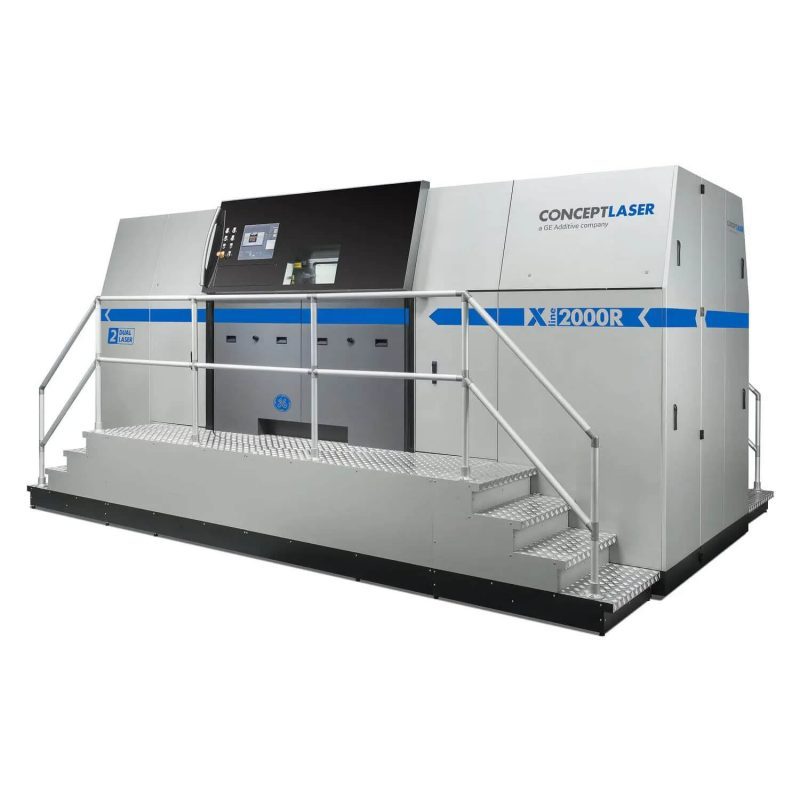
A German company, Concept Laser, manufactured this giant printer in 2016. General Electric purchased 75% of the company’s shares.
Thus, Concept Laser is the ‘World’s Largest Industrial 3D Printer’. It has a build volume size of 160 Liters.
It is used to produce large-scale functional prototypes and components with an automated production process and powder transport system.
It also has a dual laser system with a rotating mechanism, giving an output of 1000 W. It can print parts that weigh up to 1000 kg.
The printer is reliable for large-scale industrial productions. It is mainly designed for space, automotive, and jewelry manufacturing industries.
- Precise print quality
- Reliable
- Creates multiple metal parts in an hour
- Easily prints complex geometrical patterns
- Faster than other SLM 3D printers
- Huge and non-portable
- Expensive for small businesses
Markforged Metal X
|
Markforged launched Metal X in January 2017. It maintains dimensional accuracy. The company makes three claims regarding the printer:
- Simple and powerful
- Safe and affordable
- Best in class reliability
Metal X has no powder management system and does not require an operator. Minimal PPE is required. It prints in less time as compared to similar 3D printers. It has an advanced motion system and uses a wide range of materials for 3D printing.
The printer is 575 mm wide, 467 mm deep, and 1120 mm high. It weighs around 68 kilograms. It has a build volume of 300 x 220 x 180mm and provides a layer resolution from 50 to 125 micrometers.
It is priced at $99,500. However, DMLS/SLM machines cost around $500,000. It has a complete system of Wash 1, Sinter 1, and 2.
Metal X uses an Atomic Diffusion Additive Manufacturing technology. It prints with metal powder contained in a plastic binder. The material is fed to the printer by a cartridge of bound powder rods.
The plastic is melted and then fused for 3D printing. The final output shrinks by 20%, thus, producing a fully dense metal part.
- Has Wash 1, Sinter 1 and 2
- No separate powder binding system, which reduces post-processing and increases printing speed
- Can only judge printing quality through the claimed layer resolution range
Carbon M2
|
Carbon shook the market by launching the M2 industrial 3D printer with the Speed Cell system. It uses Continuous Liquid Interface technology, which makes it 25-100 times faster than other 3D printers. It has twice the build volume as compared to M1.
This allows the printing of larger parts, lower cost per part, and higher throughput. However, it has a similar resolution of 75-micron pixel as M1.
The Smart Part Washer allows automated repeatable washing of parts. Companies like Adidas use Carbon M2 for the massive production of their midsoles.
- Twice build volume
- 25 to 100 times faster
- High-resolution pixels
- Produces durable parts
- Expensive
Desktop Metal Production System
|
In 2015, a team of MIP researchers founded Desktop Metal Production System, which is impressive. It uses the ‘Single Pass Jetting’ technique to work.
The process starts by depositing metal powder and then droplets of a binding agent are sprayed onto the powder. It is then heated to bind all the layers together. These steps are repeated quickly until a functional prototype is produced.
This technology allows manufacturers to produce high-quality parts and functional prototypes that replace objects produced by using traditional methods.
The resolution of the printer is 1200 * 1200 dpi with 50 micrometers as the layer height. It offers 100 times faster production at 20 times less cost. It prints at 8200 cm3/hour with a resolution of 50-micron voxels.
The company claims that the prints produced by this giant 3D printer have a density of over 99 percent and it uses low-cost powders. 99% of the loose powder from printing can be reused. It can produce 10,000 parts per day. That is incredible. Desktop Metal also offers robust repeatability. It can print large volumes using multiple materials without compromising on quality.
The production system has a print bar with 16384 nozzles that jet 1.5 billion drops per second. Its build volume size is 490 x 380 x 260mm. The maximum build rate is 12000 cm3 per hour. It costs around $420,000. This printer is mostly used in the automotive manufacturing industry.
The company provides on-site assistance to buyers. They answer all queries regarding the machine via phone calls, email and video call through Skype.
Desktop Metal Production System is a gem for those who want to supply high-quality functional parts and prototypes to their customers.
- Competitive cost per part produced
- Produces world-class quality parts
- Offers best in class repeatability
- Uses various materials
- Costly for small businesses
3D Systems Figure 4
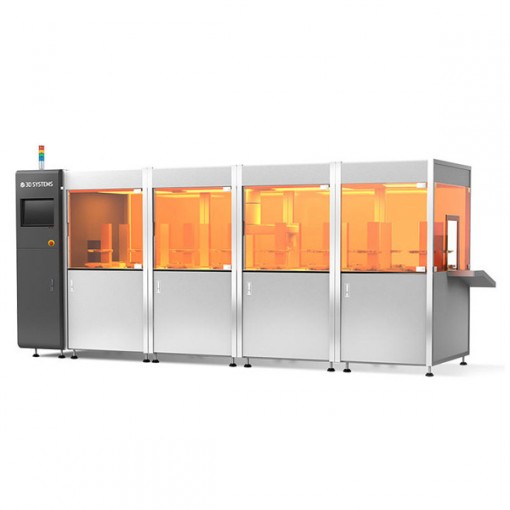
Figure 4 by 3D systems is an automated and modular 3D printing system that uses Digital Light technology for printing of polymer parts.
You can customize the printer according to your customers’ needs. The printer is 50 times faster than other SLA 3d printers. Thus, it helps in lowering the operational cost.
There is an automated material delivery and post-processing system within Figure 4. It tries to reduce parts cost by up to 71%.
It is specifically designed for dental applications and will help to reduce material waste and operational costs by 10%.
Envision TEC Perfactory 4 LED XXL
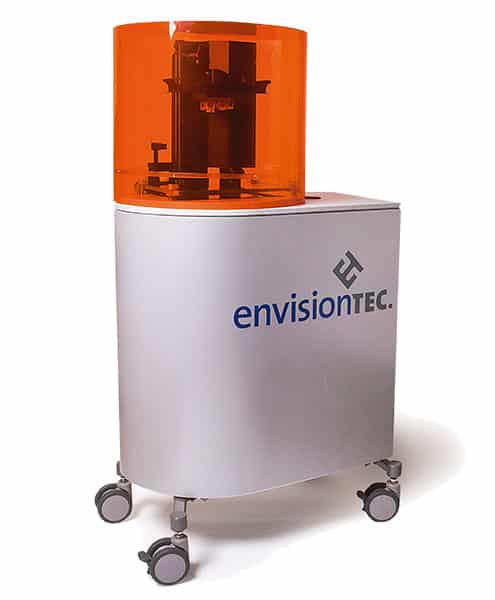
The Perfactory 4 LED XXL by EnvisionTEC has a custom LED light system for DLP 3D printing.
It is more efficient and powerful as compared to other LED light printers and helps you to lower operational costs and produce finer detailed parts. It offers higher accuracy and resolution of 1920 x 1200 pixels.
You can employ this printer for producing end-use parts and models for use in the entertainment, aerospace, medical, automotive industry, and more.
It has a build volume of 230 x 144 x 200mm. As the printer offers transparent and flexible material options, hi-impact, and a great number of dental resins, this printer is perfect for use in the orthodontics industry.
Prodways ProMaker V6000
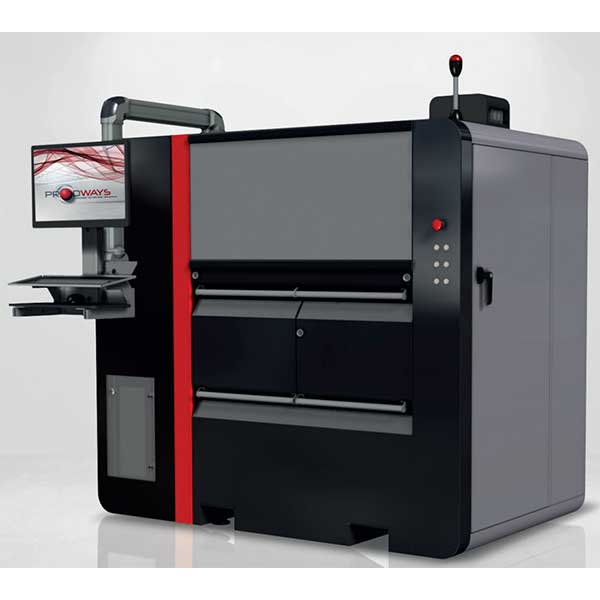
Prodways, a French 3D printer manufacturer, uses moving light technology for its printers to get high-quality prints. V6000 3D printer specializes in ceramic resin printing.
You can customize it to handle high viscosity materials. The printer polymerizes ceramic resins to print parts that are up to 99% ceramic after sintering and rebinding.
It is most commonly used in luxury, jewelry, electronics, and medical industries, with a volume of 120 x 157/350/500 x150mm and costs around $500,000.
WAAM
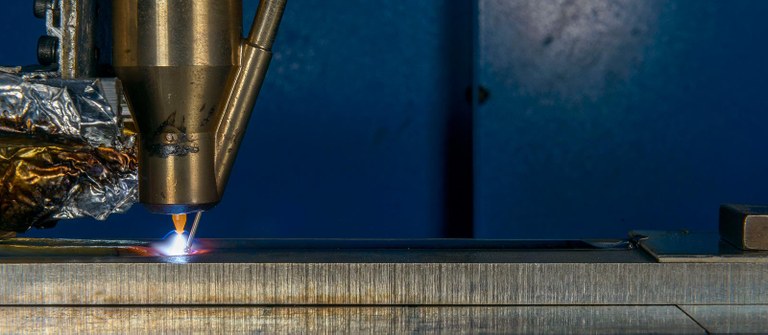
Wire + Arc Additive Manufacturing (WAAM) has a unique approach to 3D printing. It uses welding technology and feedstock for printing with the Direct Energy Disposition technique. In the process, metal wire is melted using an electric arc that serves as a heating source.
The melted metal is then deposited along a predetermined path. The process is repeated until a metal part is completed.
WAAM can use various metals in wire form (such as stainless steel, alloys etc.). It can print large-scale metal parts.
- Robotic Arms allow the production of large metal parts
- Welding wire used is cheaper as compared to metallic powder
- Output produced is highly dense and of fine quality
- Suitable for repair and maintenance operations for components like blades, molds, and dies
- Cons
- High temperatures lead to a build-up of residual stresses and distortions
- Some materials used like titanium require shielding
- Poor surface finish
Things to Consider When Buying a Giant 3D Printer
The demand for 3D printing is increasing these days, as it is cost-effective and time-saving. There are many Giant 3D printers available in the market.
You can buy one to produce large volumes of functional prototypes and parts. However, each of them varies in their functionality and price.
Thus, not all of them can serve you the best. It is important to consider the following factors before buying one, as those are costly.
Do You Need A Giant 3D Printer?
It’s most important to consider if you really need a giant 3D printer before making a final purchase decision. If a giant 3D printer adds value to the workplace by lowering the operational cost, reducing production time, and enhancing flexibility in designing, you should consider buying it.
Type of 3D Printer You Need
It is essential to know what you want to produce from a 3D printer. There are different types of 3D printers available in the market. They vary in size, shape, and printing technology.
They use different materials to print and serve different purposes. Therefore, you should research the type of printer that you need as one small requirement can make a huge difference.
Material Required To Produce Parts and Functional Prototypes
Different 3D printers use different materials to print. Some use metal and others use plastic or ceramic resins.
The type of part or functional prototype you need to produce can determine the type of 3D printer that you need, as it should use the same material to print.
You should buy a printer that uses a range of materials. All these things should be carefully considered, as it is a huge investment.
Print Quality
Industrialists need fine and smooth prints. Printers with high resolutions and robotic arms help to keep finer details intact and offer uniformity during batch production.
3D Printing Capacity
The build volume size determines printing volume. Depending on the size of components that you need to produce, it’s ideal to purchase systems that can print parts of multiple sizes.
Safety
The safety of employees is the topmost priority for any firm. The machine should be safe to use. Some large 3D printers emit toxic fumes that could be harmful to humans as well as the environment.
With continuous exposure to it, it could be hazardous. Firms should make sure the printer is eco-friendly and all safety precautions are in place when operating these printers.
Customization
This feature gives a 3D printer the edge over others. It helps to easily tailor the printer according to customer specifications.
Price and Cost to Setup
It’s one of the most important factors to consider. The cost to set up, operational cost, and maintenance cost can all add up to a significant expense for you.
Giant 3D printers are expensive and small businesses and desktop 3D printing users don’t usually have enough money and space to afford these.
Customer Support
What if the machine breaks down? Whom to contact to fix the problem or replace it? Is there any insurance or guarantee?
Manufacturers have a specialized team to support customers post-purchase. They can be contacted easily through phone calls, emails, or video calling via Skype.
Best Practices before Buying an Industrial 3D Printer
- Contact the manufacturer and ask for a sample model
- The total cost of ownership, support, and service.
- Double-check the information with what a manufacturer claims for
- Request for a 3D printed sample model to ensure that parts produced by the printer are what you exactly need. It also allows comparing the results easily with other additive manufacturing systems.
Conclusion
The market for Giant 3D printers is expanding exponentially. There are thousands of giant 3D printers available that can print large volumes.
Each of them has its own pros and cons. Companies are trying to make these printers user-friendly, eco-friendly, and affordable.
From the printers reviewed above, Desktop Metal Production System is the most cost-effective and can print large volumes using various materials while providing world-class print quality.
The Arcam Spectra H allows printing of high heat alloys by withstanding more than 1000-Celsius degrees heat. It is user-friendly and efficient.
The 3D System DMP Factory 500 provides scalability. It can print 24×7 and is best suited to produce small and complicated metal parts.
The Laser Concept X LINE 2000R is reliable, can create multiple metal parts in an hour, and easily prints complex geometrical patterns.
The SLM 500 HL 3D printer is equipped with quad laser optics that increases the speed by 90% as compared to dual laser optics. It is the most compact machine that offers a finer and smoother surface finish.
You can easily customize the EOSINT M70 based on the customer’s specification and use it for different types of metallic materials (heavy, light, or alloy) for 3D printing.
The Markforged Metal X is simple and powerful. It’s safe to use and offers world-class reliability.
The Wire + Arc Additive Manufacturing (WAAM) uses welding technology and feedstock for printing. Its robotic arms provide flexibility in the production of large metal parts. It is suitable for repair and maintenance operations for components like blades, molds, and dies.
HP’s Jet Fusion is eco-friendly. It is capable of color 3D printing efficiently. It can also be used for medium-sized manufacturing.
Stratasys J735 and J750 are the top two prototyping industrial 3D printers in the market. They can 3D print multi-color and multi-texture objects using multiple materials that are similar in look, touch, and functionality as the production parts.
The Carbon M2 uses Continuous Liquid Interface technology, which makes it 25-100 times faster than other 3D printers.
All Giant 3D printers have their unique selling point and this article provides the ultimate buyer’s guide for those looking for exclusive properties in a giant 3D printer.
The industry of Giant 3D printers is expanding exponentially. There are thousands of giant 3D printers available in the market that can print large volumes. Each of them has its pros and cons.

